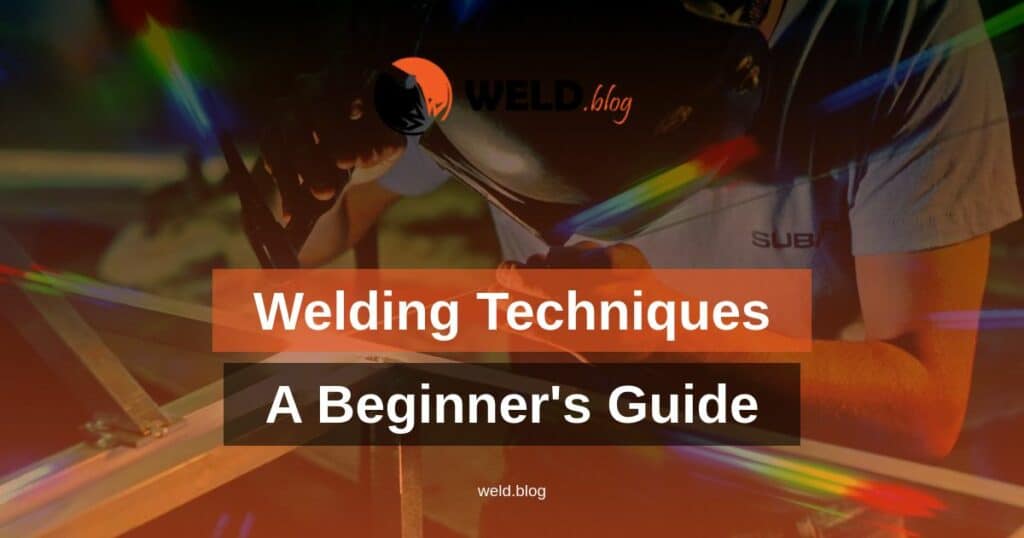Welding is a process that is used to join two pieces of metal together. It is a vital process that is essential in many industries, including construction, manufacturing, and repair. Welding requires specialized tools and equipment, as well as knowledge of the different techniques involved.
The Basics of Welding
Before we dive into the different welding techniques, it’s important to understand some of the basics. Welding involves the melting and bonding of two metal pieces using heat and pressure. The most commonly used welding methods include:
- Stick welding (SMAW)
- MIG welding (GMAW)
- TIG welding (GTAW)
- Flux-cored arc welding (FCAW)
Each welding method has its own advantages and disadvantages, which we will discuss in more detail below.
Stick Welding (SMAW)
Stick welding, also known as Shielded Metal Arc Welding (SMAW), is one of the most basic welding techniques. It’s a manual process that uses a stick electrode to create an arc between the metal pieces being joined. The electrode is coated in a flux material that produces a shielding gas to protect the molten metal from contamination.
Stick welding is often used in the construction industry and is ideal for welding thick metals and outdoor work. It is also one of the most cost-effective welding methods, as it doesn’t require expensive equipment.
MIG Welding (GMAW)
MIG welding, also known as Gas Metal Arc Welding (GMAW), is a semi-automatic process that uses a wire electrode to create an arc between the metal pieces being joined. The wire is fed through a spool gun into the welding area, along with a shielding gas to protect the molten metal from contamination.
MIG welding is a popular method in manufacturing and automotive repair, as it is fast and produces clean welds. It is also ideal for welding thin metals and can be performed in any position.
TIG Welding (GTAW)
Tungsten Inert Gas (TIG) welding, also known as Gas Tungsten Arc Welding (GTAW), is a precise welding method that uses a non-consumable tungsten electrode to create an arc between the metal pieces being joined. The electrode is protected by a shielding gas, typically argon, and a filler metal is added to the weld if necessary.
TIG welding is often used in the aerospace and medical industries, as it produces high-quality welds that are free of defects. It is also ideal for welding thin metals and is versatile enough to be performed in any position.
Flux-Cored Arc Welding (FCAW)
Flux-Cored Arc Welding (FCAW) is a welding technique that uses a continuously fed electrode that is also filled with flux material. The flux material produces a shielding gas to protect the molten metal from contamination, and a filler metal may be added if necessary. FCAW is similar to MIG welding, but the difference is that the electrode used in FCAW does not require a shielding gas to protect the weld.
FCAW is ideal for outdoor welding and is commonly used in construction and shipbuilding industries. It is also suitable for welding thick metal sections.
Choosing the Right Welding Technique
Choosing the right welding technique depends on several factors, including the type of metal being welded, the thickness of the metal, the welding position, and the required weld quality.
Stick welding is ideal for outdoor work and welding thicker metals, while MIG welding is suitable for thin metals and produces clean welds. TIG welding produces high-quality, precise welds and is often used in the aerospace and medical industries. FCAW is ideal for outdoor welding and welding thicker metal sections.
Welding is an essential process in many industries, and there are several techniques available to join two metal pieces together. Each welding method has its advantages and disadvantages, and it’s essential to choose the right technique based on the project’s requirements. Whether you’re a beginner or an experienced welder, understanding the basics of welding is crucial in producing quality welds.
| Welding Method | Advantages | Disadvantages |
|---|---|---|
| Stick Welding (SMAW) | Cost-effective, suitable for thicker metals, ideal for outdoor work | Slow process, produces rougher welds |
| MIG Welding (GMAW) | Fast, clean welds, suitable for thin metals, can be performed in any position | Requires a shielding gas, more expensive than stick welding |
| TIG Welding (GTAW) | Precise, high-quality welds, suitable for thin metals, can be performed in any position | Slower process, more expensive than other methods |
| Flux-Cored Arc Welding (FCAW) | Ideal for outdoor welding, suitable for thicker metals, produces clean welds | Produces more slag than other methods, requires proper ventilation |

